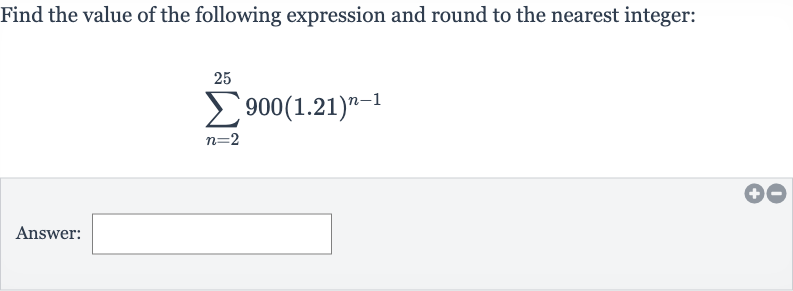Full solution
Q. Find the value of the following expression and round to the nearest integer:Answer:
- Recognize Given Expression: Recognize that the given expression is a geometric series where the first term , the common ratio , and the number of terms .
- Use Formula for Sum: Use the formula for the sum of a finite geometric series, which is , where is the sum of the first terms of the geometric series.
- Plug Values into Formula: Plug the values into the formula: .
- Calculate Numerator: Calculate the numerator of the fraction: . This requires calculating first. (using a calculator)Now, subtract this from : .
- Calculate Denominator: Calculate the denominator of the fraction: .
- Divide Numerator by Denominator: Now, divide the numerator by the denominator: .
- Multiply by First Term: Multiply this result by the first term of the series to get the sum of the series: .
- Round to Nearest Integer: Round the result to the nearest integer: rounds to .

